A touristy city, but not massively so
El Jadida is a city located in the south east of Morocco, just a short distance away from the country's largest city, Casablanca.
It's a beach town that all of the Moroccans from Casablanca are extremely proud of and they say that it's one of the gems of the south, especially the Sidi Bouzid beach.
I have been going to this city every single summer since I was born and, unfortunately, I like it less and less with each year that passes.
Despite how dirty the city is, I also have to admit that it has got somewhat better in the last couple of years in this respect, especially after UNESCO named El Jadida as a World Heritage Site.
In my opinion, I don't think that this city has any particularly attractive about it, except for two things: the city wall and the Portuguese cisterns.
El Jadida was a Portuguese colony during the seventeenth century for around 250 years.
This city is one of the most visited summer destinations by the people of Marrakesh, given its very close proximity.
According to several travel agencies that I have looked at to find out what it said about this city, they consider El Jadida to be one of the key touristic points in the country, and it gave me the surprise of my life.
According to these agencies, El Jadida is one of the cities with the most charm on the Moroccan coast.
Excuse me, what? Charm, where exactly? In the very whites of the clouds?
If I sound extremely sarcastic, it's because this city is increasingly less charming (as I mentioned earlier).
Throughout this journey that takes you to the city centre, you begin to notice a nauseating smell with each step taken, becoming increasingly more intense and unbearable.
The streets are full of rubbish, especially on the corners and between the tree roots.
I don't know why, but if I had to describe Morocco in a few words, I would say: full of nauseating cities.
Look, Morocco is a very pretty country, especially the areas where the population is sparse. However, those who have been to Morocco and tell me that during their stay (for the majority of it), it didn't smell of rubbish, so they must have had a blocked nose or something because the bad smell is really strong.
Anyway, I like told you earlier, there are basically two things to visit in El Jadida:
-
The city wall:
The vast majority of the lower part of the city wall is full of graffiti and urine stains.
Luckily, it was like this earlier and not now. Thanks to UNESCO naming the city a World Heritage Site, they have cleaned these imperfections off of the walls.
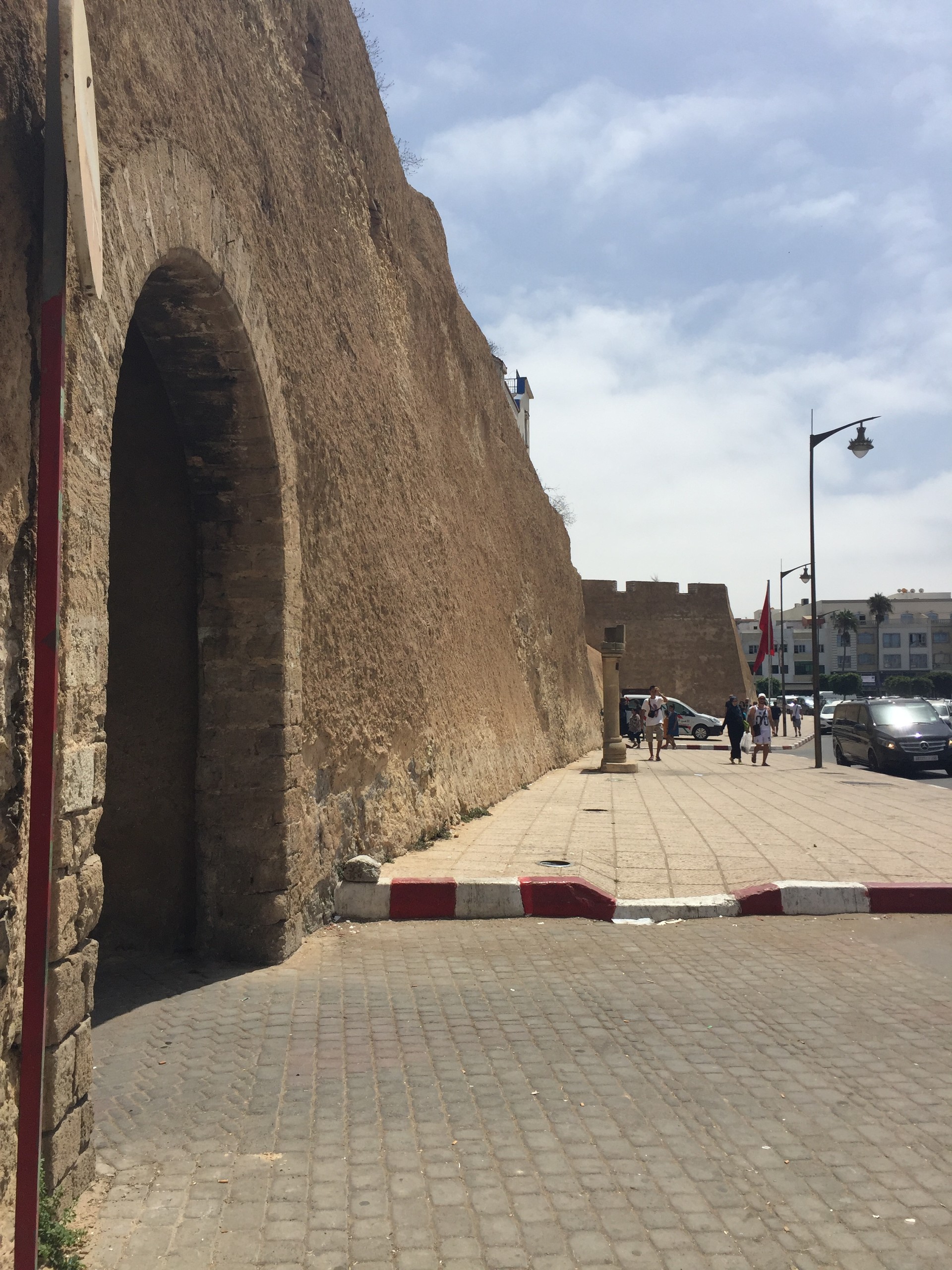
After the walls, once having arrived at the port, the smell that emanates from the sea burns your eyes and taking a mouthful of this contaminated air can end up killing you.
This panorama that I am telling you about (luckily for those of you who want to visit in the future), changes every time for the better, even if it takes a while for it to happen.
Since the city was named a World Heritage Site, the King of Morocco, Mohammed VI, has put a plan in place for the cleaning and reconstruction of the wall and the historic city centre.
Since I arrived in Morocco one week ago, today has been the first occasion where I have had a free day to decide what to do and to do what I want alone without having to bring my hundreds of aunties, uncles and cousins with me.
As I explained to you all in an earlier post on my profile where I talked about Casablanca, my grandparents' house is in the Sidi Bouzid area, so, to get to the city centre, you only have to catch the bus or take a taxi.
The most recommendable way to get to Al Jadida is by taking a taxi, which will drop you off right in the city centre, next to the lighthouse. From there, you will only have to walk in a straight line until you reach the city wall.

The taxi journey costs 5 dirhams and, within 15 minutes, you will have arrived in the city centre.
Today, the sun was starting to get stronger, so I have prepared myself well to combat it with huge sunglasses, a hat and a long dress that protects me from the sun but without making me overheat.
One piece of advice that I have for young women going to Morocco: don't wear shorts or vest tops, no matter how hot it is.
If you do wear them, no one is going to chop your head off or throw stones at you, but everyone (especially the men) will be staring at you and they won't take their eyes off of you for a single second, and you will feel like they are looking at you as if you were a piece of meat.
And that´s not all, as some young guy with an outstretched hand will dare to touch you as they wish because some men have no shame nor respect for women.
This is something that I will never understand: how is it possible that in a Muslim country, where the men are supposedly meant to respect women, that they are mistreated and abused in that way?
The majority of men here are shameless and repulsive.
And the worst thing of all is that, even if you are dressed in the most modest way humanly possible, there will always be some idiot who wants to try it on with someone.
And, unfortunately, I am telling you this from experience.
This happened to me in Marrakesh, which, according to recent tourism surveys, is the most touristy city in the world.
Marrakesh is full of foreigners who walk around in short shorts and tight tops because who really wants to cover themselves up from head to toe in 43 degree heat?
With this climate, you would think that the Moroccans should be used to seeing women's legs or cleavage, but the reality is the exact opposite; every time they see a 'piece of meat', they turn into animals and stare at them with this look of desire like they want to eat them.
This happened to me once when I wore a short-ish dress that sat just above the top of my knees, whilst the sleeves fell to my elbows. In any other non-Muslim country, it would have been considered as an autumn dress for the length of the skirt and the sleeves.
However, in Marrakesh, it would have seemed like the tiniest outfit ever seen because, whilst I was walking along, I felt like the shameless men were crouching down behind me to try and see under my skirt, or they tried to come up to me in an intimidating manner to say something dirty (unfortunately, I understand Arabic).
But it didn't stop there. There was another occasion when I went out wearing quite a long and flowing dress, that was almost impossible to discern the outline of my body through given how wide it was and thanks to the flowery pattern.
However, despite being quite modestly dressed and wearing nothing that could be considered risqué, one guy had the audacity to touch my bum whilst I was walking through the city.
At first, I thought it was one of my friends joking around, but when I turned around and saw the guy blowing me a kiss, I flew into such a rage that I chased him so that I could at least give him a slap. However, one of my friends stopped and restrained me, whilst the other threw a bottle of water at him.
My friend, who is actually from Marrakesh, told me that the best thing to do would be to not retaliate because she was scared that he might have a hidden knife (or another sharp) that he could use to attack my face and leave me with lifelong scarring.
I was completely freaking out - something really out of character for me - and was full of anger; I just honestly couldn't believe what she was telling me.
Then what? I would have to reduce myself to swallowing my pride and keep walking along while these pigs said or did whatever they wanted to me?
My friend me that we didn't have any other options, as she had seen the same thing happen to other girls who wanted to confront the attackers and it didn't turn out well for them at all. It was for that reason why she advised me not to go up to them.
In all honesty, they looked really dirty and unwashed, like the kind of people who would be very capable of doing something bad if they found themselves with a defenceless person, or just a woman directly.
After my friend convinced me to not go and beat the guy up, I broke down and started to cry uncontrollably.
Never in my life have I had something like that done to me, and I ended up feeling completely violated and I even started to hate myself for having gone out dressed the way I did.
From that moment, I had put a big mental red cross through Morocco and, had it not been for my grandparents living there, I never would have gone back.
For as long as I can remember, I have known that the majority of men in Morocco are pigs, but given that I was always going out with my parents and auntie and uncle, I just assumed that no one would have the guts to come up to me.
But, on that occasion, I was with just my girl friends in Marrakesh and there were just four of us in total.
What makes me angrier than anything else is that, despite being quite well-covered and not trying to insinuate anything, I have been a victim of such a disgraceful act.
No woman in any part of the world should never have to be subject to physical contact without giving her utmost consent, irrespective of what she chooses to wear.
So, it's for this reason that I recommend that you try not to draw too much attention to yourselves, as much for the way that you dress as for the make-up that you wear, so that you can avoid this type of situation coming your way as much as possible.
Anyway, having returned to Jadida, I have this time decided to dress a little bit more reservedly, and I went out with my father because I didn't dare go out alone after what happened last time.
Once we arrived at the lighthouse, we carried on walking in a straight line, passing by little bars and cheap novelty shops where they were selling all manner of products.
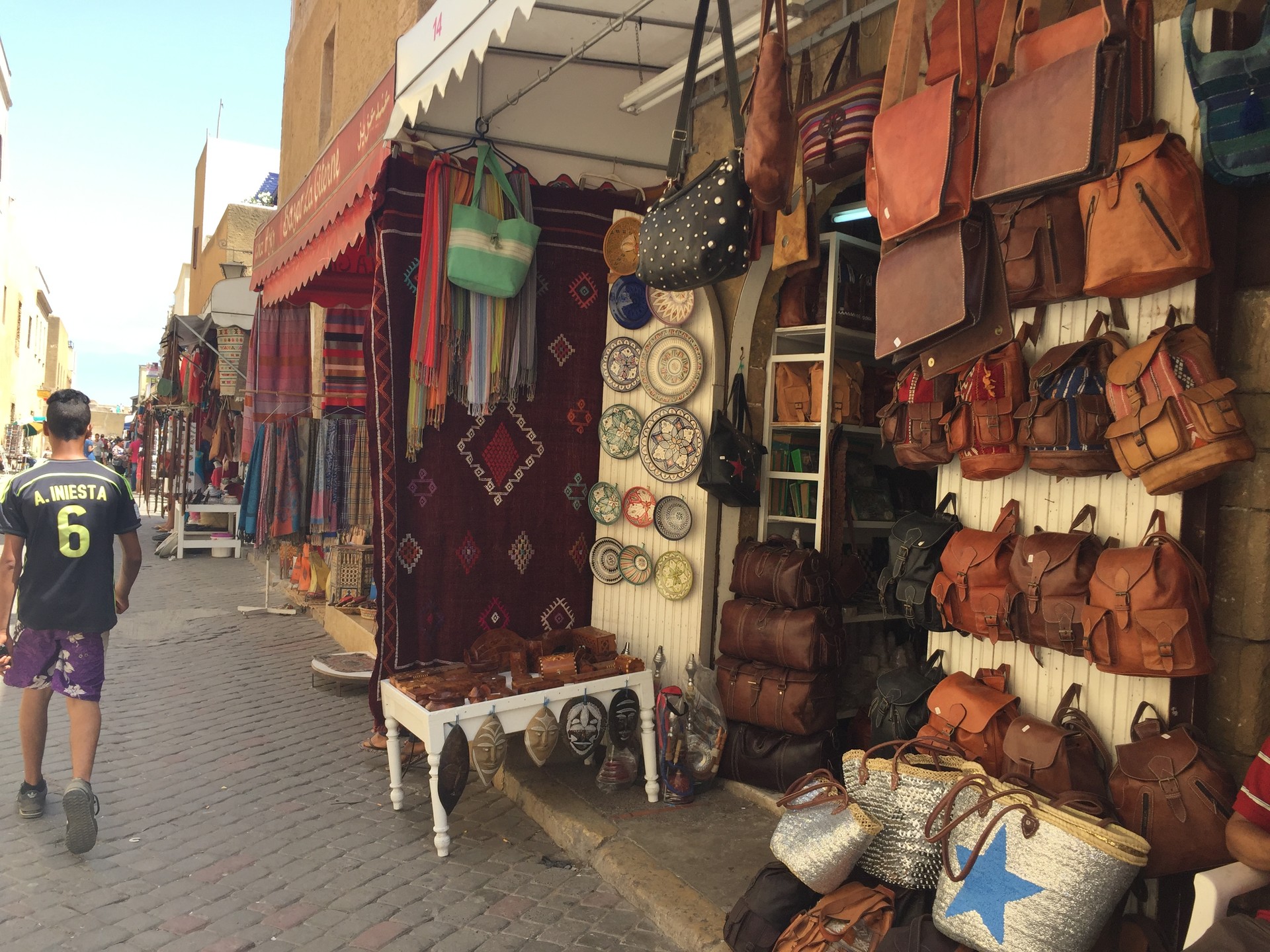
In the middle of the journey, we decided to have an ice cream, which ended up being quite bad and expensive.
In Spain, during the car journey to Morocco, we stopped for a short while to rest in Algeciras and we ate a huge two scoop ice cream for just 3. 40€, which was really good.
The ice cream that we ate in El Jadida was made of three relatively normal-sized scoops, with pieces of ice inside it because it had defrosted and then been frozen again, at a cost of 25 dirhams (around 2. 50€) and it was awful. Without a shadow of a doubt, it was a total waste of money.
After this, we continued walking until we finally arrived at the Portuguese city walls.
Once past the city wall, we entered the Portuguese city.
From the entrance, you can get an idea of what this place used to be like because, despite the fact that the city's old town used to be a mess, huge improvements have been made in recent years and there are no longer piles of rubbish lining the streets. Ultimately, this helps your imagination to believe what the city used to be like centuries ago.
It's enough to just follow the little alleys until you arrive on the other side of the city wall in the port.
In reality, the historic city centre is incredibly small: in less than 15 minutes, you will have walked around it in its entirety without expending a lot of effort.
You will know that you have arrived at the end point when you come face to face with the sea.

Years ago, that area was one of the dirtiest in the entire city because the people were so disrespectful that they would through their rubbish into the sea and even urinate in it.
The worst thing of all is that one of my relatives lives just in front of that quay and I used to hate going to visit them with a passion because the bad smell would enter into even the deepest, darkest corners of the house.
But, as I told you earlier, it has all changed now and at least there are no longer rubbish bags in the water.
Even during the summer, you will see children both young and not so young swimming in the water and jumping in from the highest part of the walls.
No matter how happy those kids looked to be, I think that swimming in those waters should be banned given how contaminated they are.
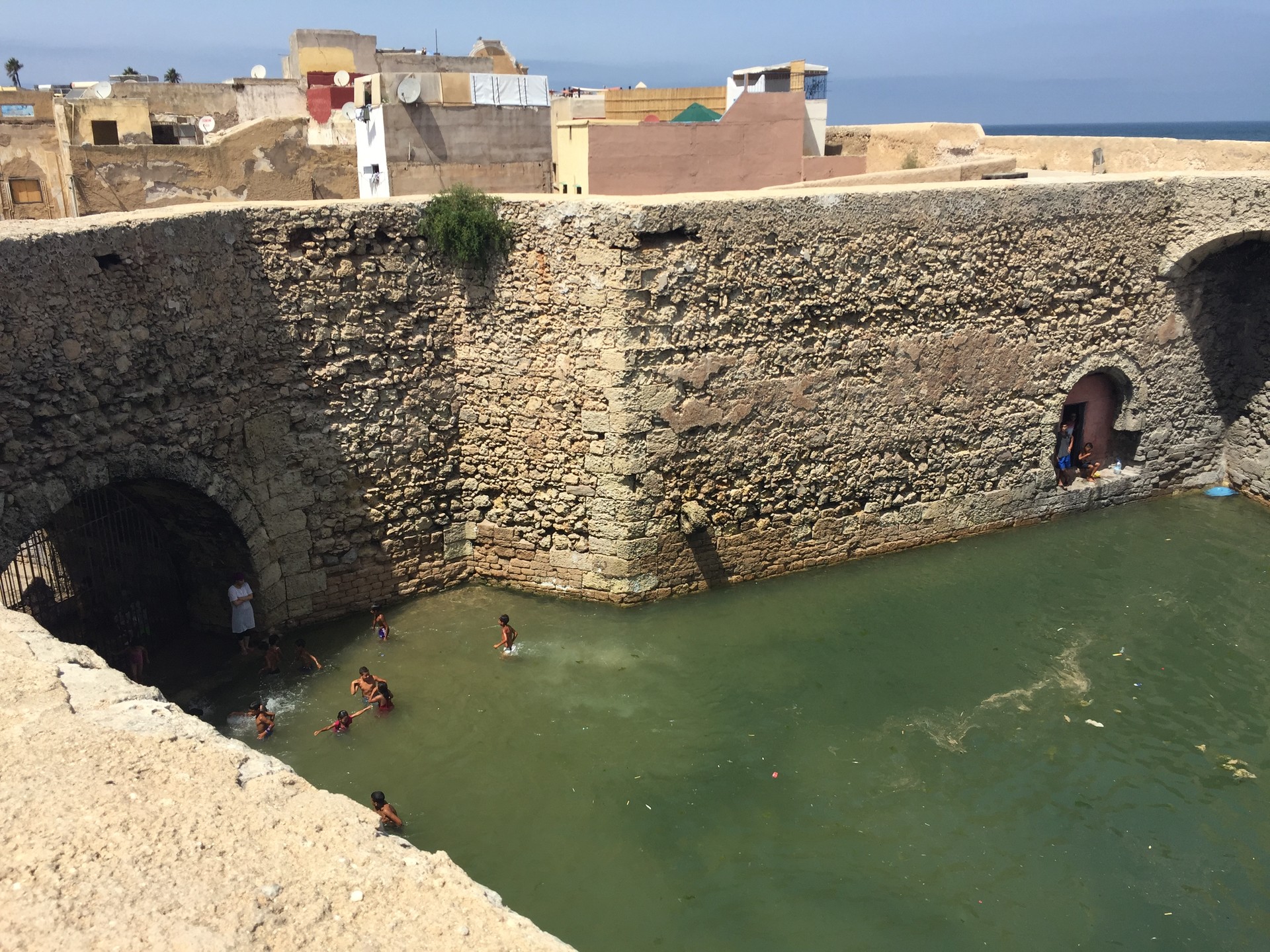
In spite of the cleaning work that has been done, there is still much to do and a putrid egg-like smell is given off. As if that wasn't enough, the water is very green and brown, and surely more than one person has ended up with an infection.
There is no surveillance of the area and there are even parents who happily take their children to swim in these extremely dirty waters.
And the whole things of jumping off the walls is totally unacceptable in my eyes, especially if there is no kind of surveillance or security in case someone ends up cracking their head open... but, anyway, every knows what they want to do with their life.
From those bars that you see in the photo, to the right-hand side, you will find a small hill that will take you to the highest part of the city walls, where you will be able to catch sight of the city's roofs and, off to one side, the ocean.
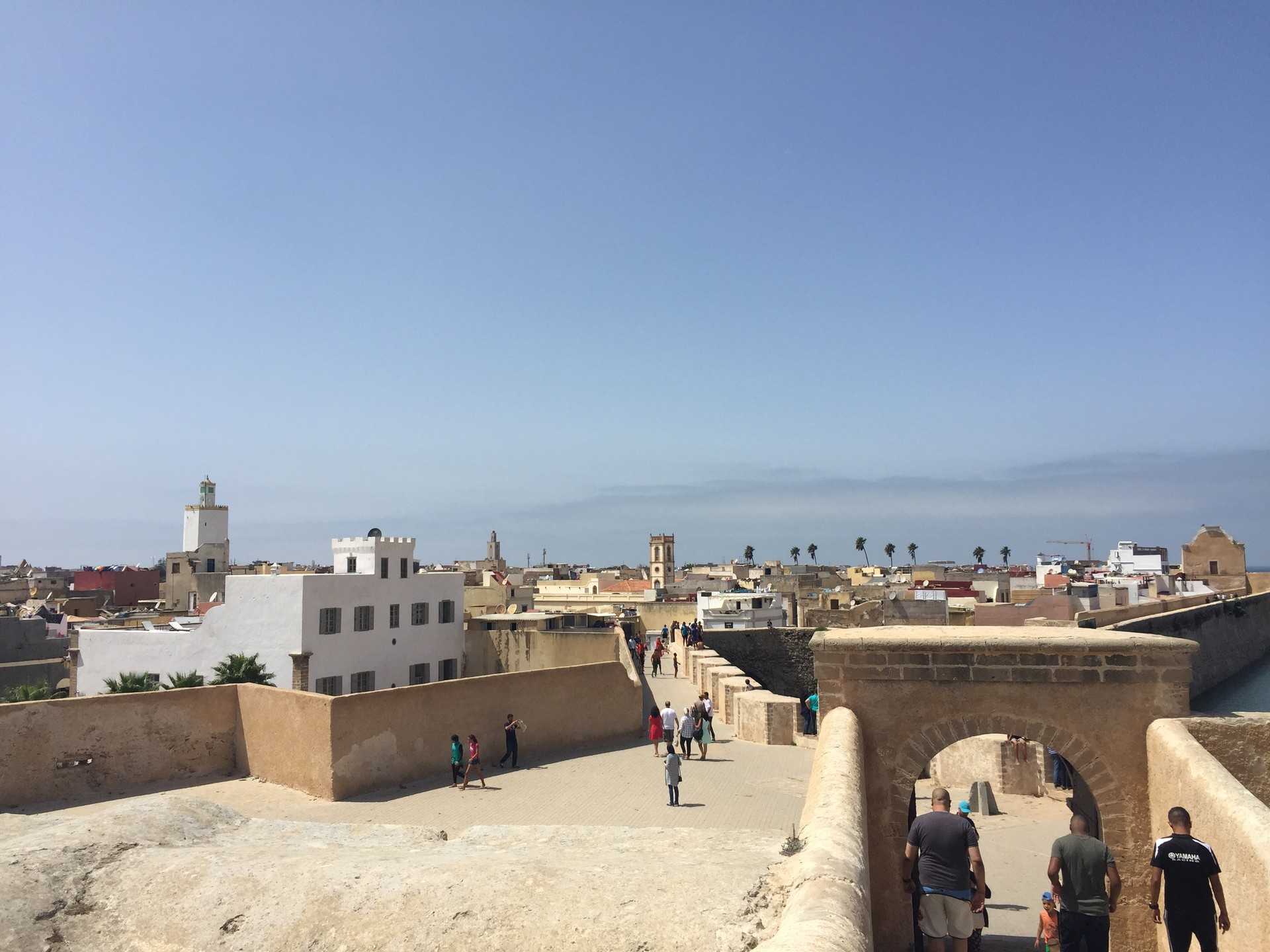
Unfortunately, the city wall is not very high compared to the height of the majority of the buildings in the city, so you can't really get that good of a view of the city, but something is better than nothing!
After going for a walk around the walls and taking some photos on top of the cannons, it's time to go back down to the historic city centre, almost to the walls' entrance to find yourself at what is, from my point of view, the most interesting thing and the place that's most worth seeing in the city: the Portuguese cisterns.
-
Portuguese cisterns:
When the Portuguese occupied El Jadida, this place, in the beginning, was going to be a weapon room, but due to the fact that they channelled and drained the rain really well and could supply the city with drinkable water in case they were attacked or were left without supplies, they decided to make it into cisterns.
Here's an interesting fact for you: Orson Welles filmed part of the film, Othello, at the Portuguese cisterns in El Jadida.
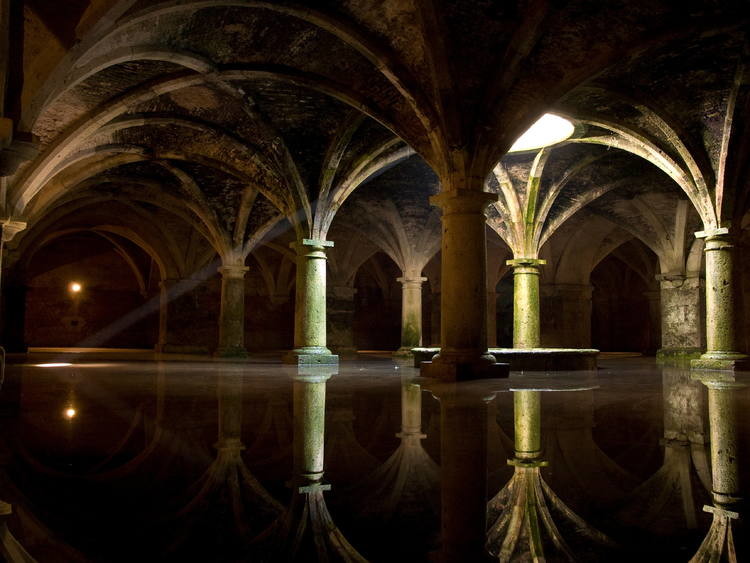
The entrance to the cistern is not very eye-catching. It is hardly even recognisable with just a Moroccan flag (I honestly think that they should put a Portuguese one, but anyway... ) and a little sign that has the opening hours and prices written on it.

-
Prices:
Opening times:
I think that the price is more than affordable, and not only that, but it ends up being nothing compared to the experience of being able to see the cisterns because they are honestly a marvel, so it's worth going down there to see them.
After seeing the cisterns, it's time to find somewhere to eat, which proves to be quite a difficult task.
In Morocco, especially in El Jadida, the people go absolutely crazy about fish, especially for sardines, so you will soon grow tired of seeing places that only serve fish.
You won't find "real" restaurants either... you know the ones where you sit at a clean table, with serviettes and proper tablecloths (not made of paper), and clean cutlery, where the waiter comes to write your order down and doesn't shout it across the entire establishment to the chef? Yeah, they don't exist here.
And if you find a "legit" restaurant, it will cost you an absolute bomb and, at best, the food won't be worth the price being paid for it.
The typical places to eat in Morocco are those classic "restaurants" situated on the side of road, like those in Spain but, in my opinion, a little bit worse.
Personally, I don't at all recommend it: it's better to buy a couple of kilos of meat or fish and then cook it yourselves. However, for those of you who don't have a kitchen at your disposition, try to find somewhere that is clean, but, I'm warning you now, the food will be the same wherever you go.
Anyway, after seeing the city walls and the cisterns, you can always visit the beach, which isn't exactly a life-changing experience in itself...
Jadida Beach:
In my opinion, the beach is too close to the port and it doesn't seem at all hygienic in my eyes, so when my parents took me there, I didn't even dare to get in the water. However, during the summer, this beach is always completely full of people (especially people from Marrakesh).
Given that there is no beach in Marrakesh, people usually enjoy their summer breaks in a nearby city that has a beach so that they can cool off from the scorching city heat.
In addition to Jadida Beach, there is also another beach that is located a bit further out from the city centre (approximately 20 minutes by car), called Sidi Bouzid, which is where my grandparents live.

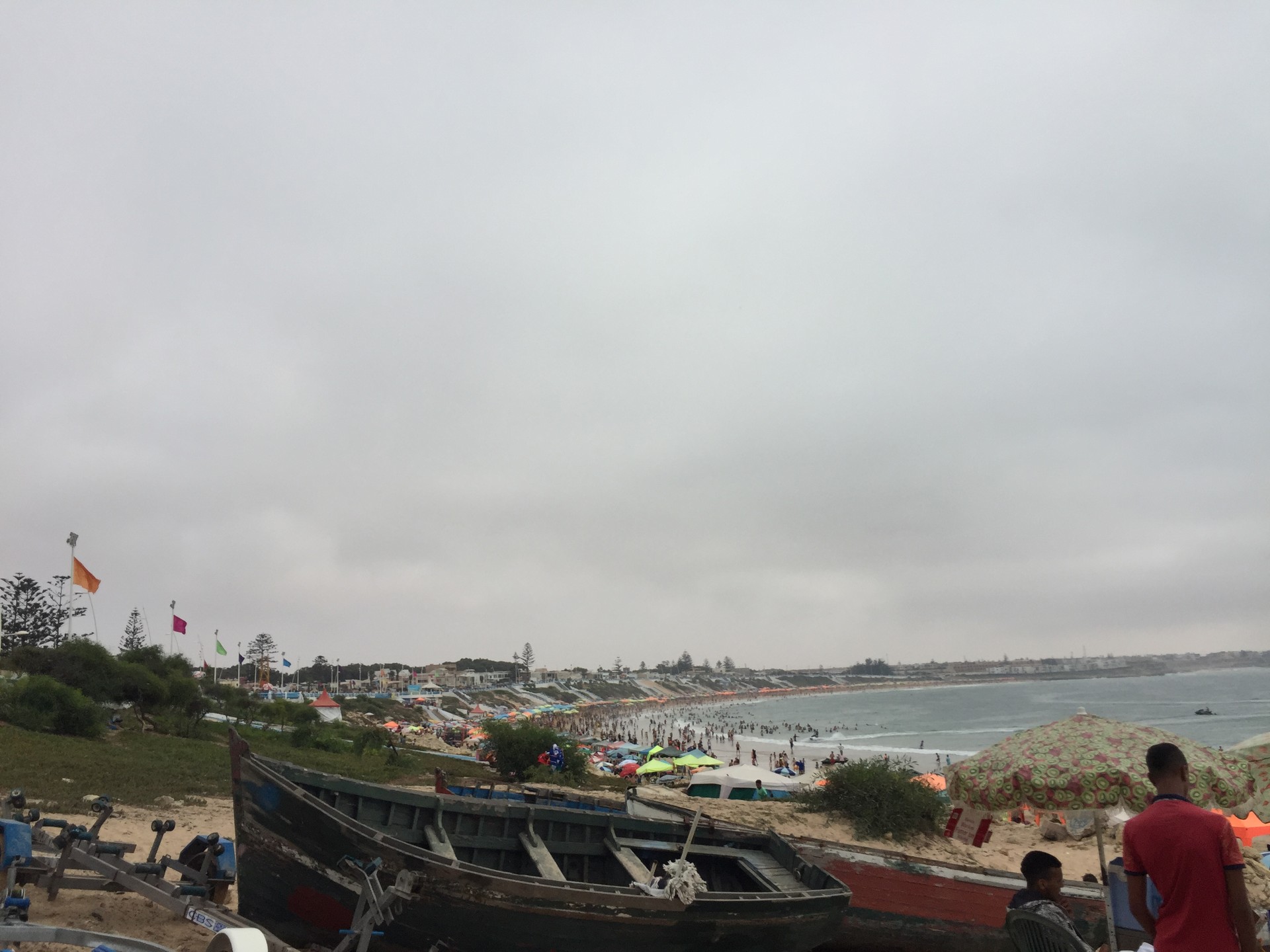
This place is almost 100% dominated by tourism: it is full of houses available for rent, hostels and big hotels, especially as you get closer to the beach.
The cost of rent in the summer is really expensive compared to the cost at other points during the year, or compared to the cost of renting a house in the city centre.
Regardless, it will seem very cheap for foreigners.
For example, staying for three nights in a two bedroom apartment with a kitchen and bathroom in August costs 350 dirhams, which is around 35€. Not bad, right?!
Without a doubt, apartments are rented most frequently because the hotels in this area are indeed expensive - even for foreigners!
One night in a standard hotel in peak summer season can end up costing more than 1000 dirhams, which is around 100€.
Besides, if you are going to Morocco on holiday, you are going to want to go out and see the city rather than holing up in your hotel room; unless, of course, you're staying in a "super hotel" like the Riad.
However, the price of 350 dirhams for an apartment is only applicable in Jadida, as the situation changes when you get to Sidi Bouzid.
The price for a three night stay can end up being more than 500 dirhams (around 50€), which, for what that includes, is decent for foreigners, but not so much for Moroccans themselves.
Anyway, my advice would be, if you want to visit the financial capital of Morocco, Casablanca, and you also want to go to the beach and enjoy a touristy city that doesn't smell awful, what you should do is rent a place in Jadida. Then, early one day, take a taxi or catch a bus to spend the entire day in Casablanca until night falls, and then go back to Jadida in time for dinner.
Photo gallery
Content available in other languages
- Español: Ciudad turistica aunque no tanto
- Français: Ville touristique mais pas tellement
- Italiano: Città turistica, ma non troppo
Rate and comment about this place!
Do you know El Jadida? Share your opinion about this place.


























